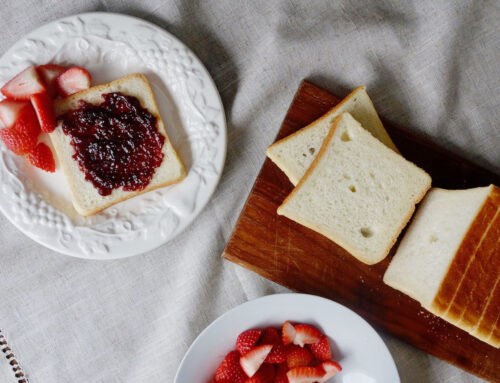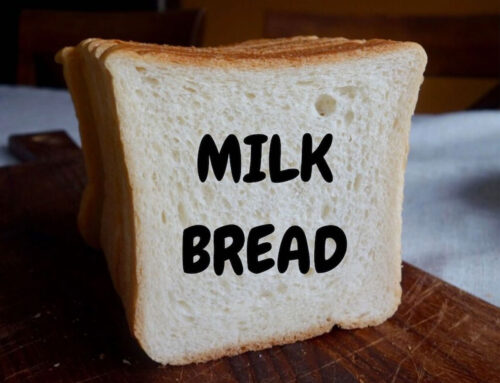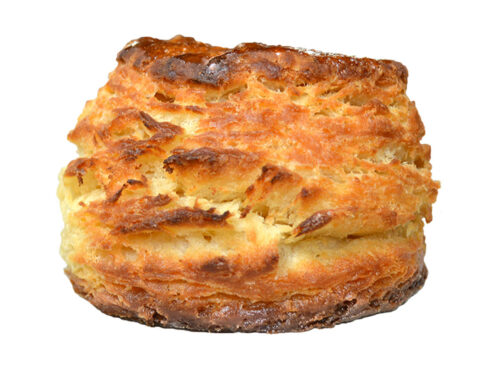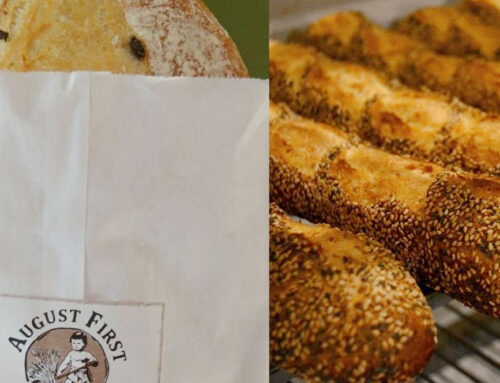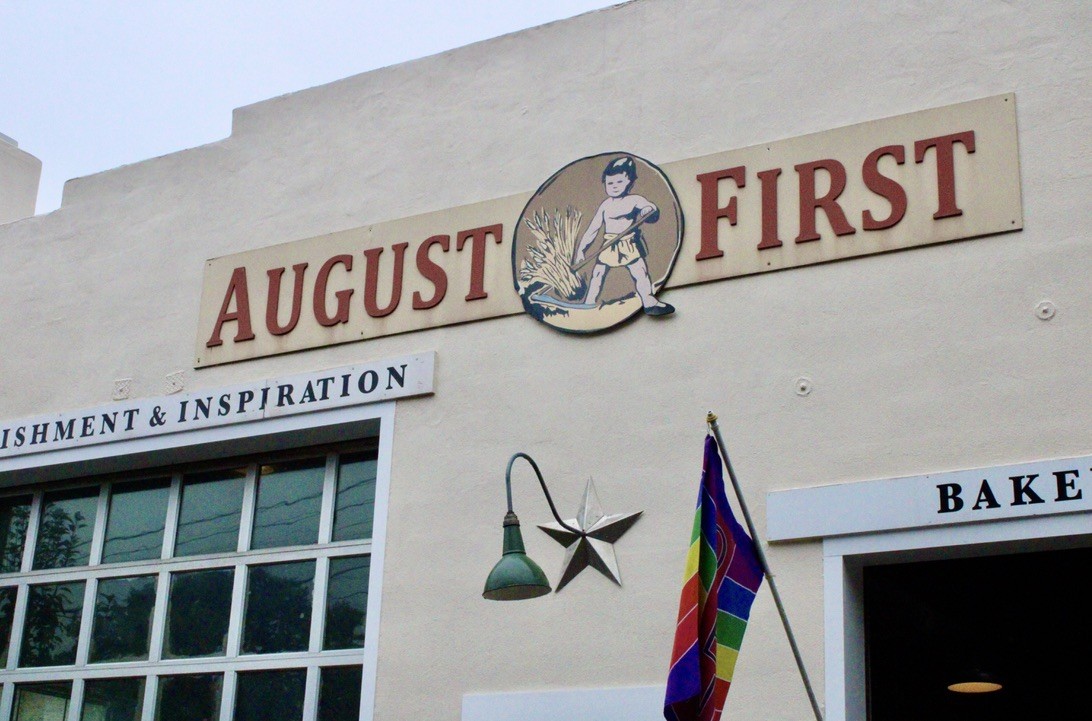
Breaducation: Honey Whole Wheat
Ever peeked into a bakery’s window to catch a glimpse of bread in the making? Curious as to how the Country French on the shelf gets so golden? The baguette, so crunchy? The Olive Bread, so … so … fluffy? Forget peeking. How about a front row seat?
We created “Breaducation” to open the blinds and show you how our bakery makes our most popular breads.
And now, we’ve decided to give our Instagram Story series a permanent, published space. This way, whenever you’re curious about how bread is made and why we employ specific techniques, you won’t be limited to a disappearing story – or peeking through the windows.
Soften your good butter. Here’s everything you need to know about our Honey Whole Wheat bread!
Honey Whole Wheat
Our day begins at 5:30am at the mixer. We add water, whole wheat flour, and yeast. To incorporate the ingredients, we mix slowly and then switch to a faster speed to knead it all together.

And then we allow the dough to rest. Because everyone needs to relax sometimes, including gluten. This stage is called the ‘autolyse‘. Pronunciation varies, but our knowledgable baker Kyle says, “aw-toe-lease.” The benefits of allowing the dough to rest between 10 and 30 minutes is a stronger gluten network, which will lead to better texture, fully hydrated flour, and therefore, drool-worthy flavor. Think of it as bread’s power nap.

Once the dough has gotten its precious rest, it’s time to add even more flavor. A waterfall of honey drenches the dough. Then we add oven roasted sesame seeds, which, yes, has a similar aroma to a coffee beans. And it is delightful to inhale before 6am.
The second mix is when we add salt. If we added it in to the first mix it could inhibit the yeast’s work.
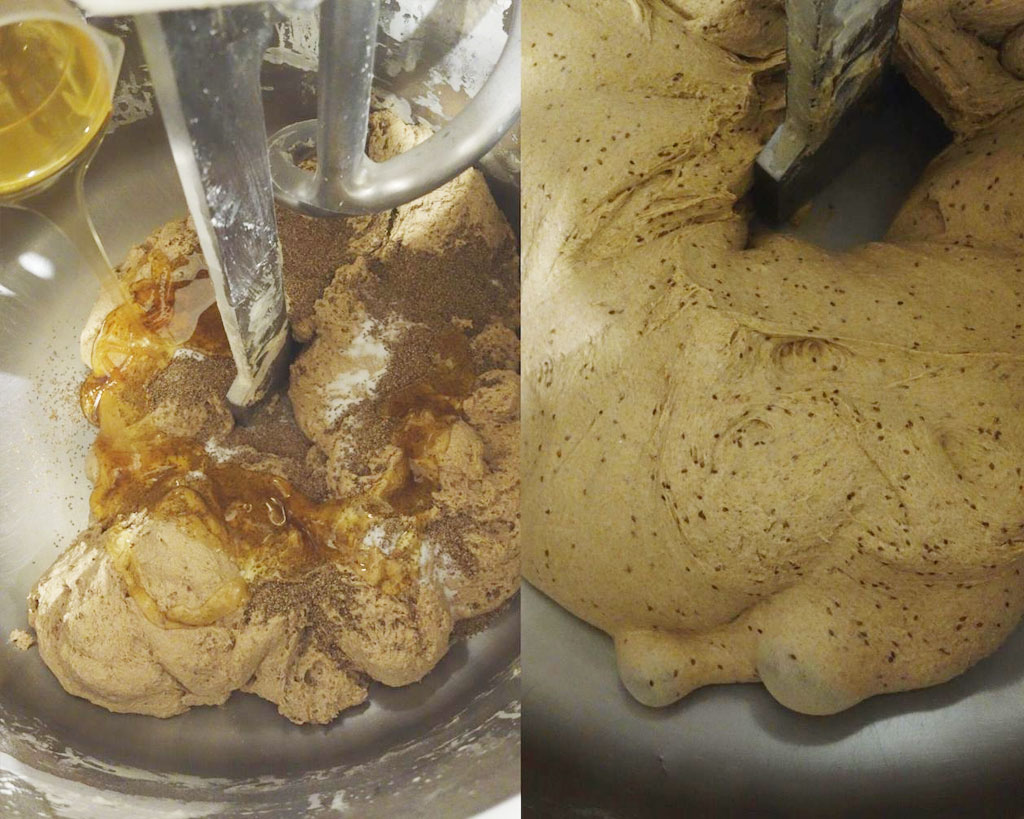
After everything has been mixed in and the dough looks glossy, we enter our first wait. There’s a lot of waiting in bread, but it’s all worth it. The first proof (bulk fermentation) will take about 2 hours, in a warm corner of the bakery. Below is the before and after of this bulk fermentation:
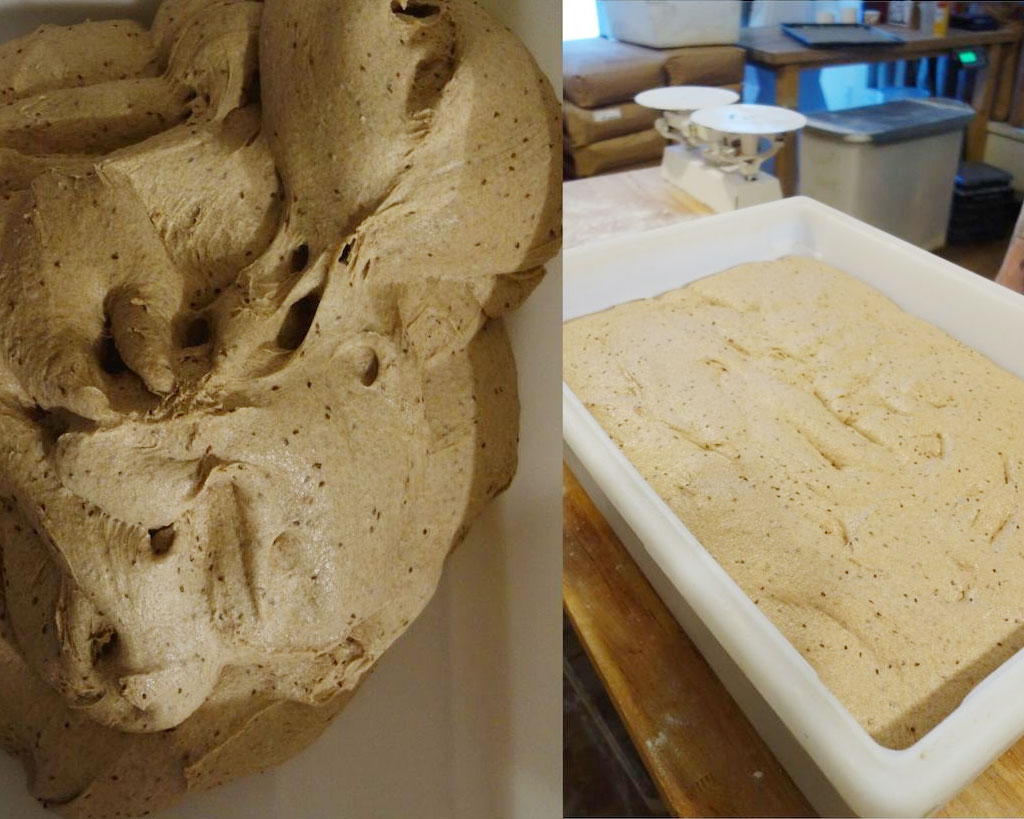
Pretty neat!
The dough is then turned out onto a lightly floured bench for us to separate and then shape.

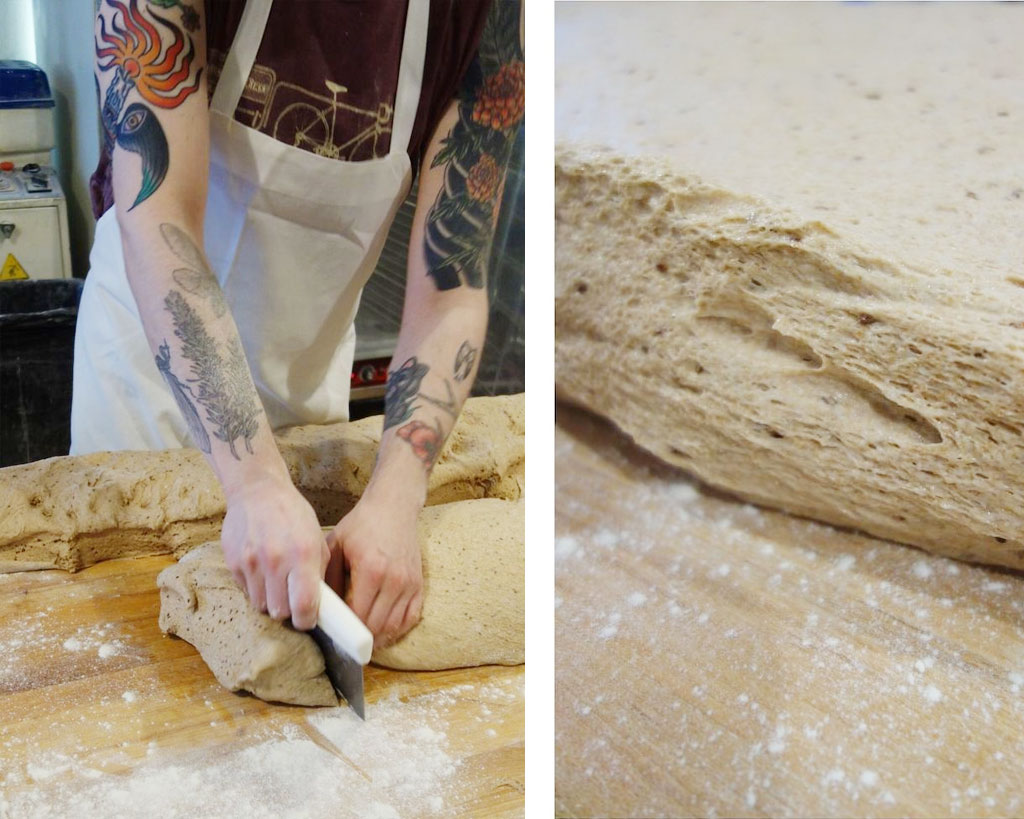
We weigh each and every loaf to achieve consistency.
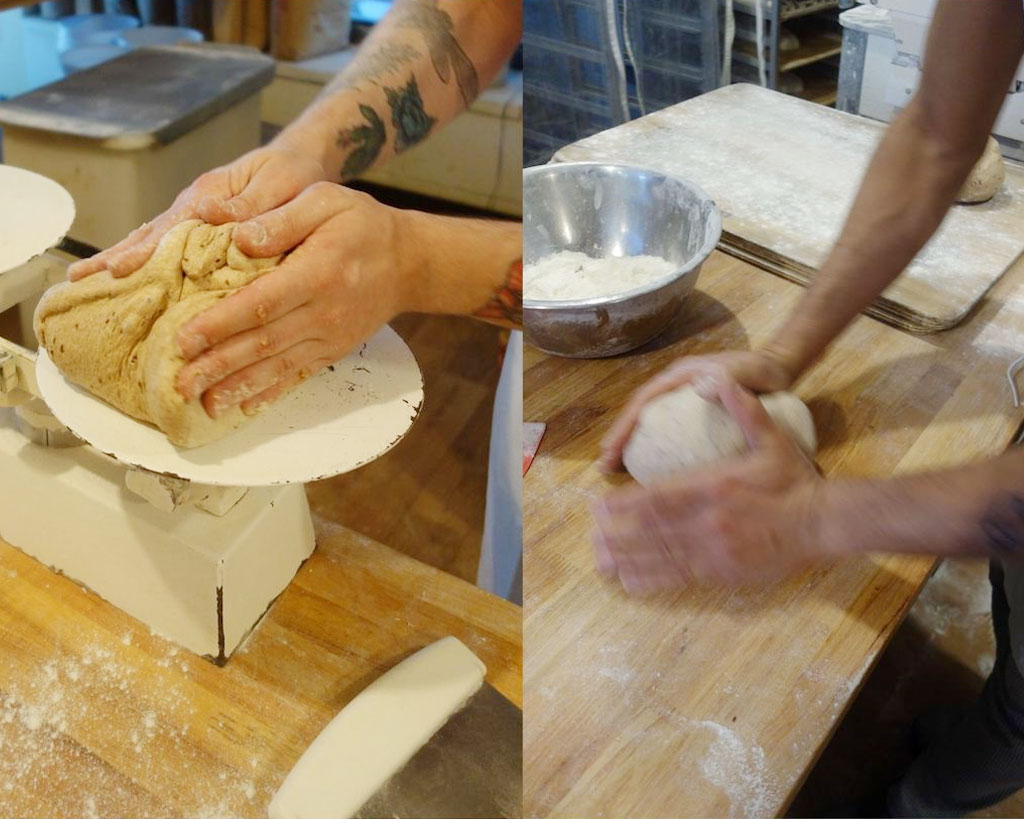
We get 24 loaves out of the mix. And now they get loaded onto lightly floured trays and are popped into the proofer. They’ll board here for an hour more or so, until …
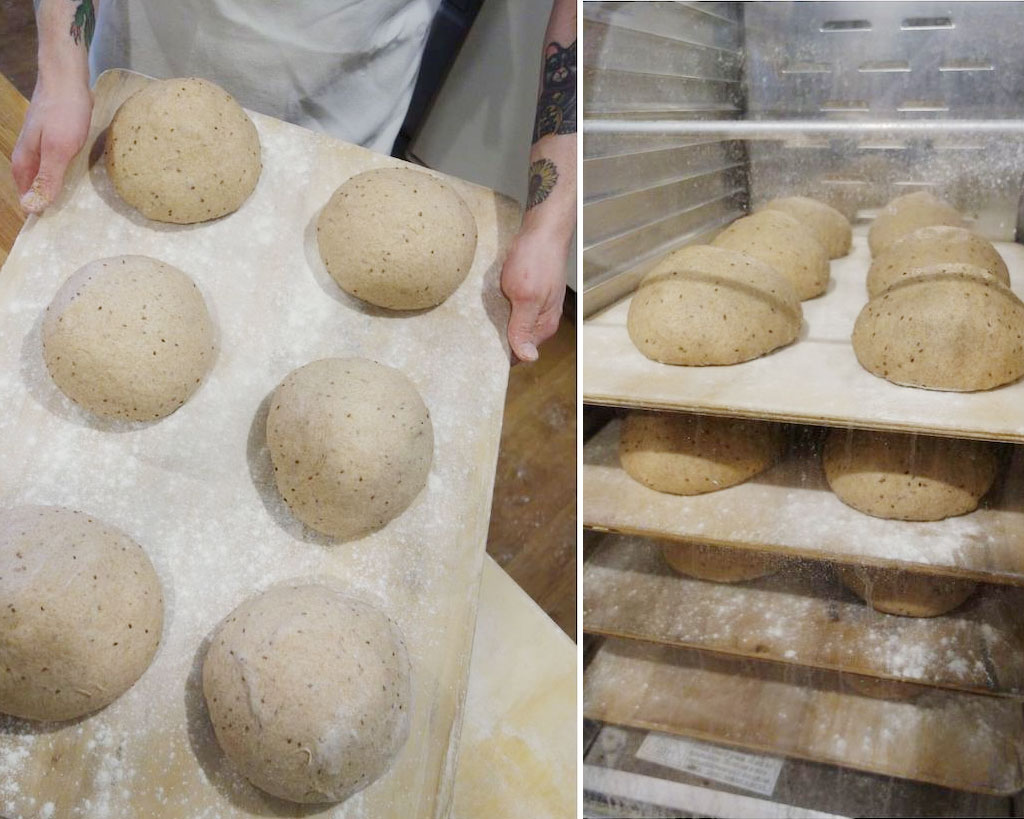
Smooch test: When the bread has proofed enough it should slightly touch the next loaf. This is what we call the “smooch test”. Cue all the ‘awws’. Note: the image below is not the Honey Whole Wheat dough.
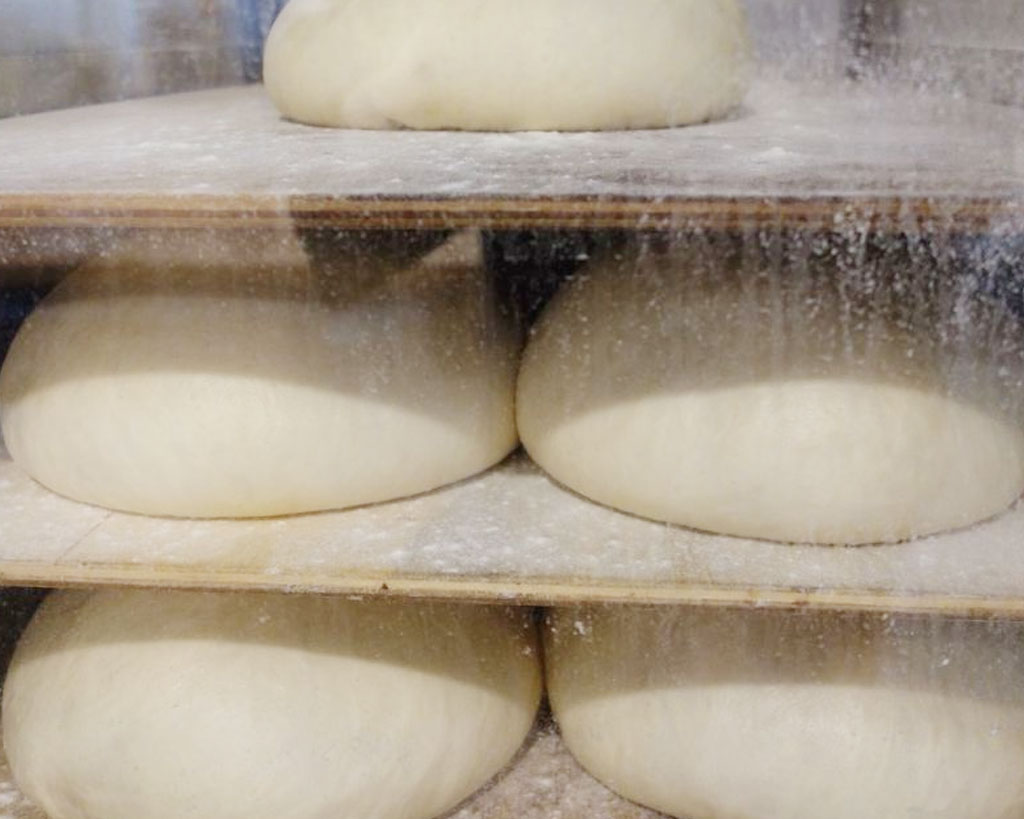
Once the Honey Whole Wheats have smooched, they’re shaped into their final form. We’ll wait (again) for these to proof for an hour or so. When will we know they’re ready? Well, there’s a particular and precise way to tell.

Once the bread has domed over the pan’s rim by 2″ that’s our cue to bake it. A rolling pin is a bakers friend, and so is a ruler.

Once the bread has domed over the pan’s rim by 2″ that’s our cue to bake it. A rolling pin is a bakers friend, and so is a ruler.

The Honey Whole Wheat is scored down the middle. This is to let steam escape so that bread is encouraged to expand up instead of out.
Finally, after an all day affair, the bread cools on racks before being sliced, and delivered next door to our café where you can pick them up!
We recommend enjoying Honey Whole Wheat as morning toast, smeared with avocado or butter. Use slices as the book ends of a delicious sandwich. Or, make a bread pudding out of a few 2-day old slices.
Have a favorite way to use August First bread? Let us know! Show us on Instagram, or on Facebook.

